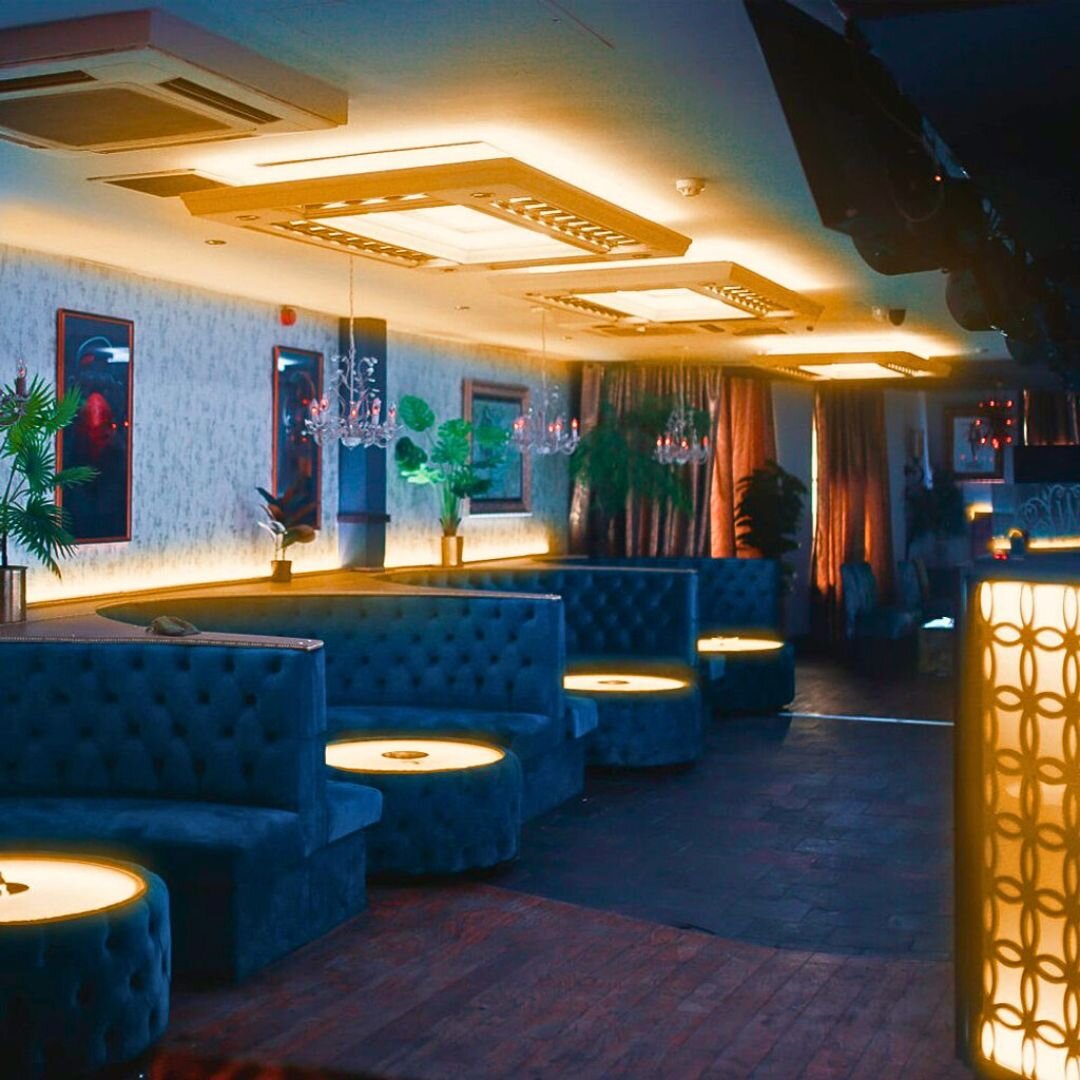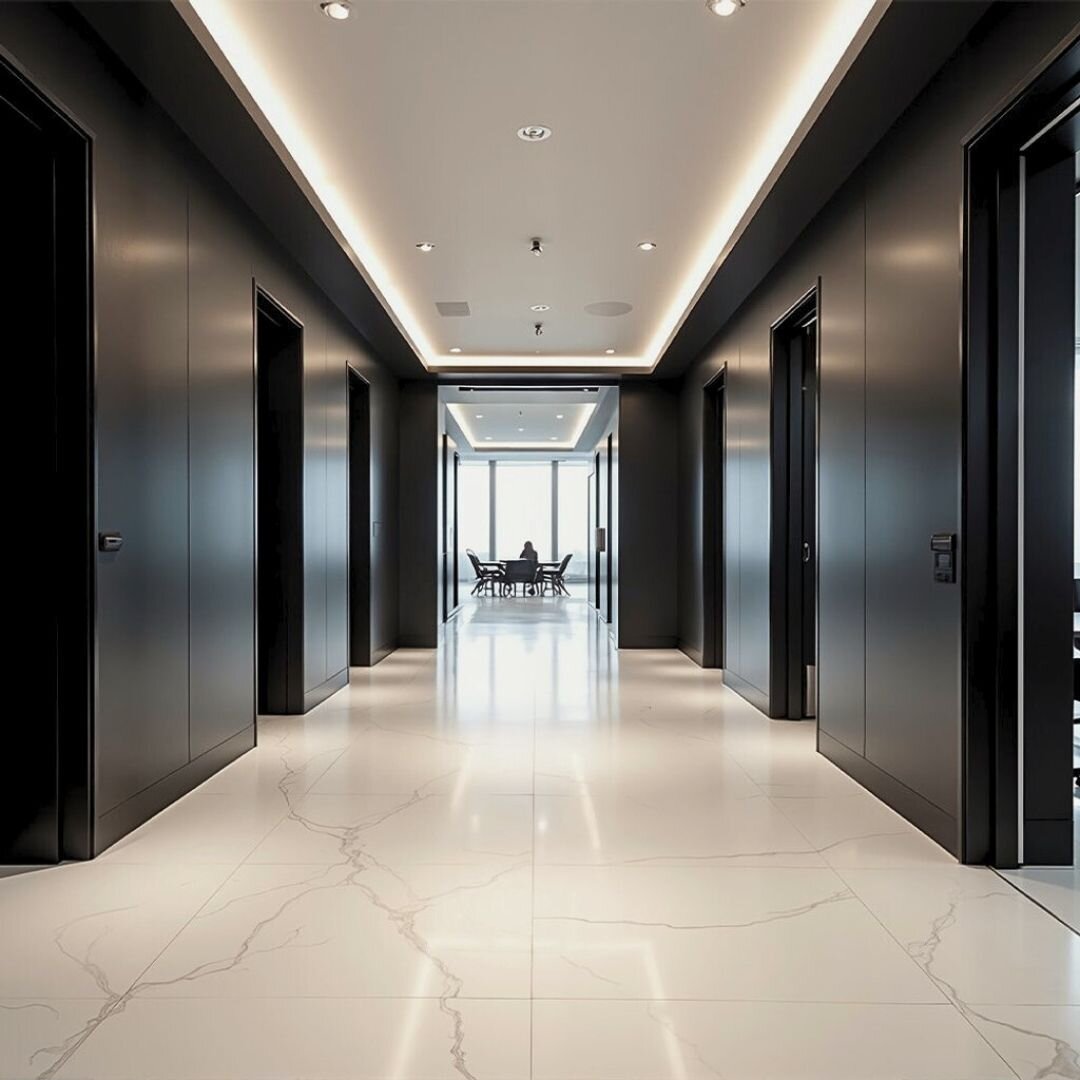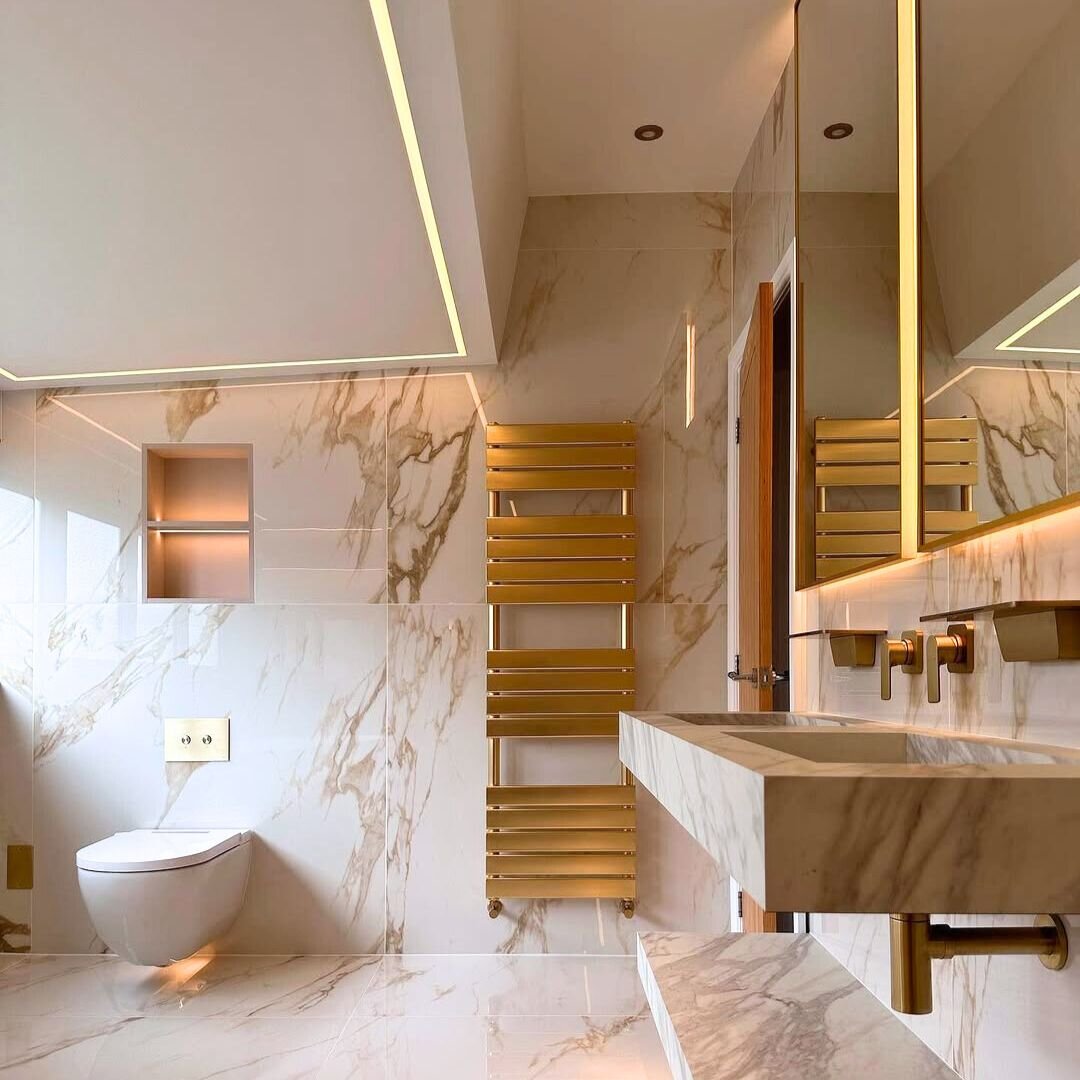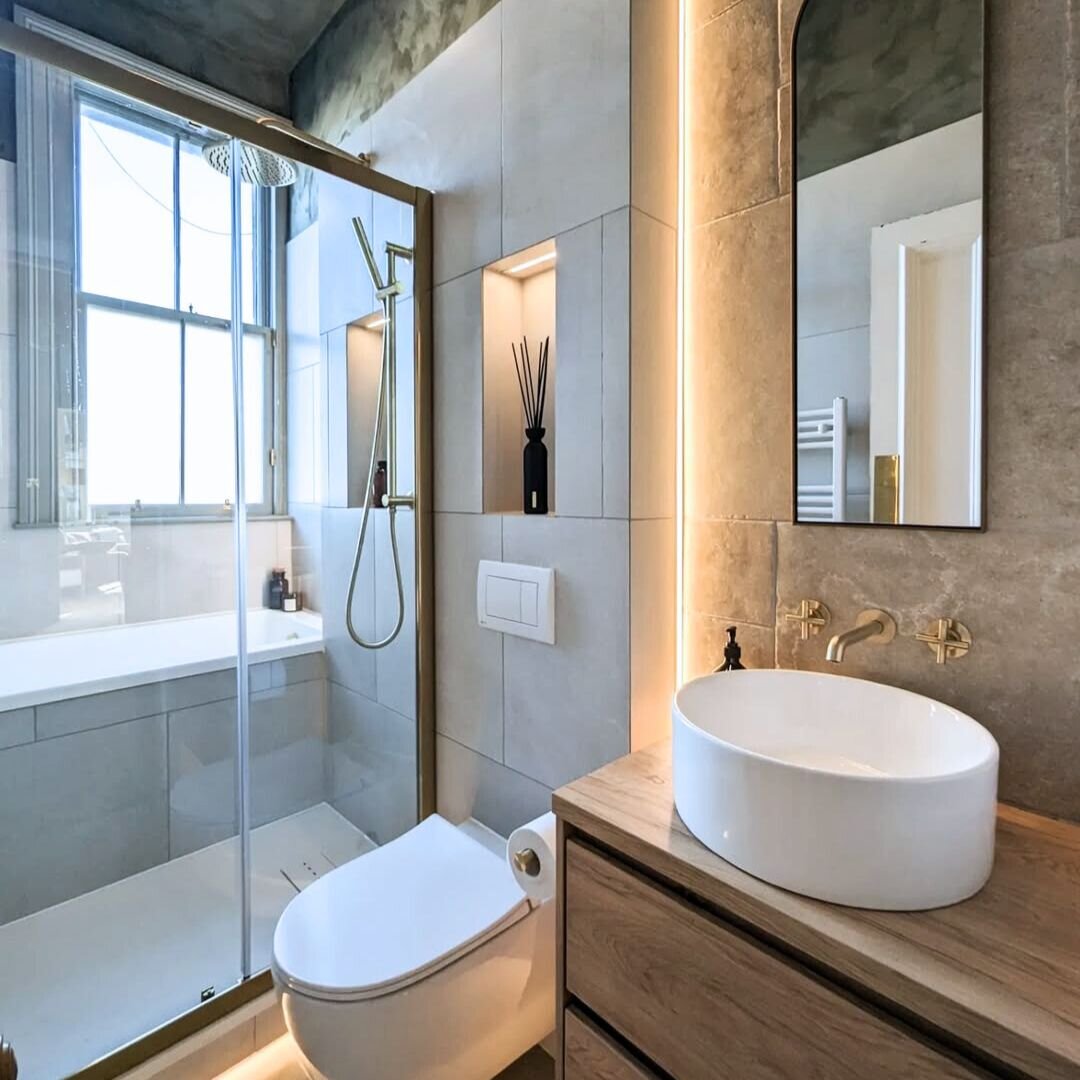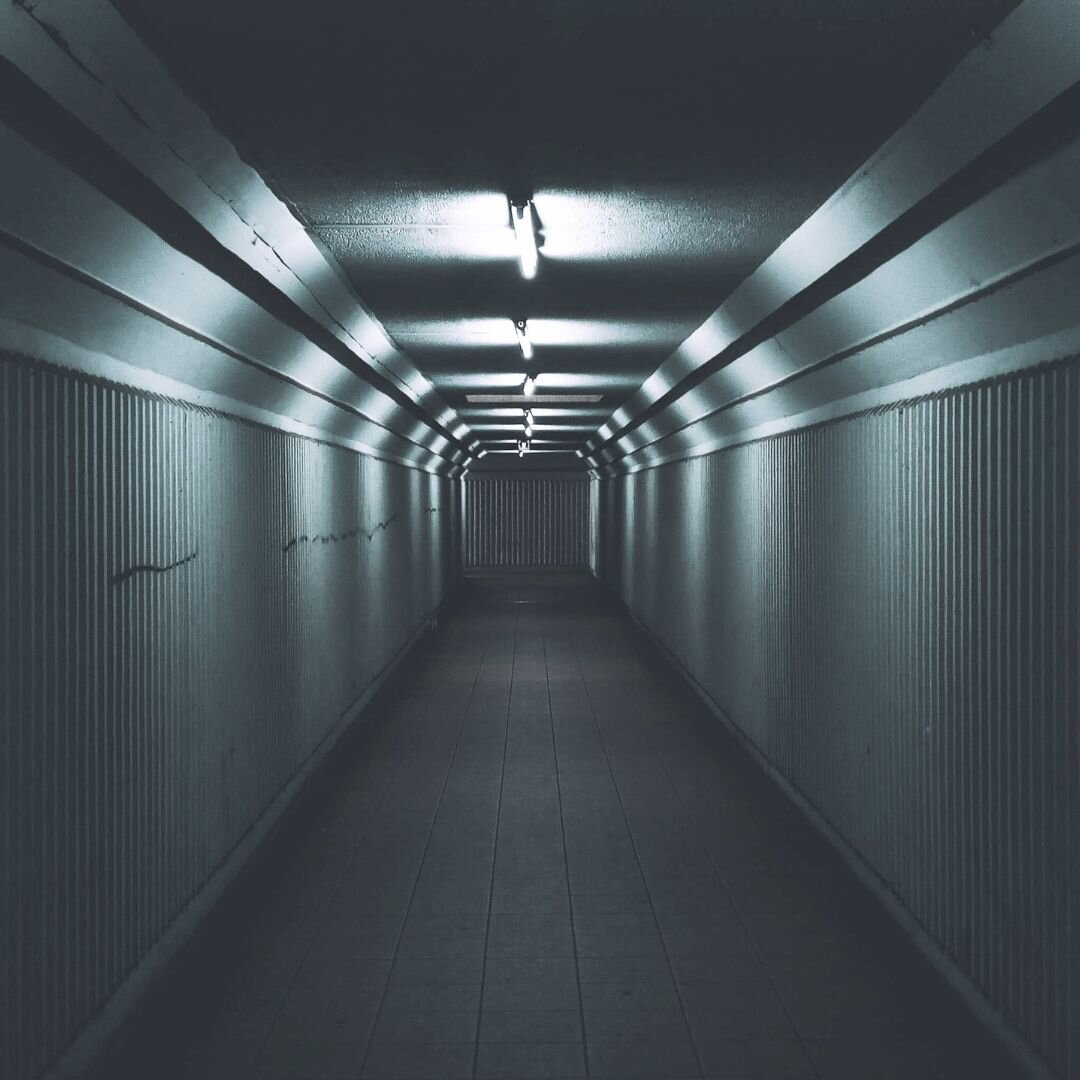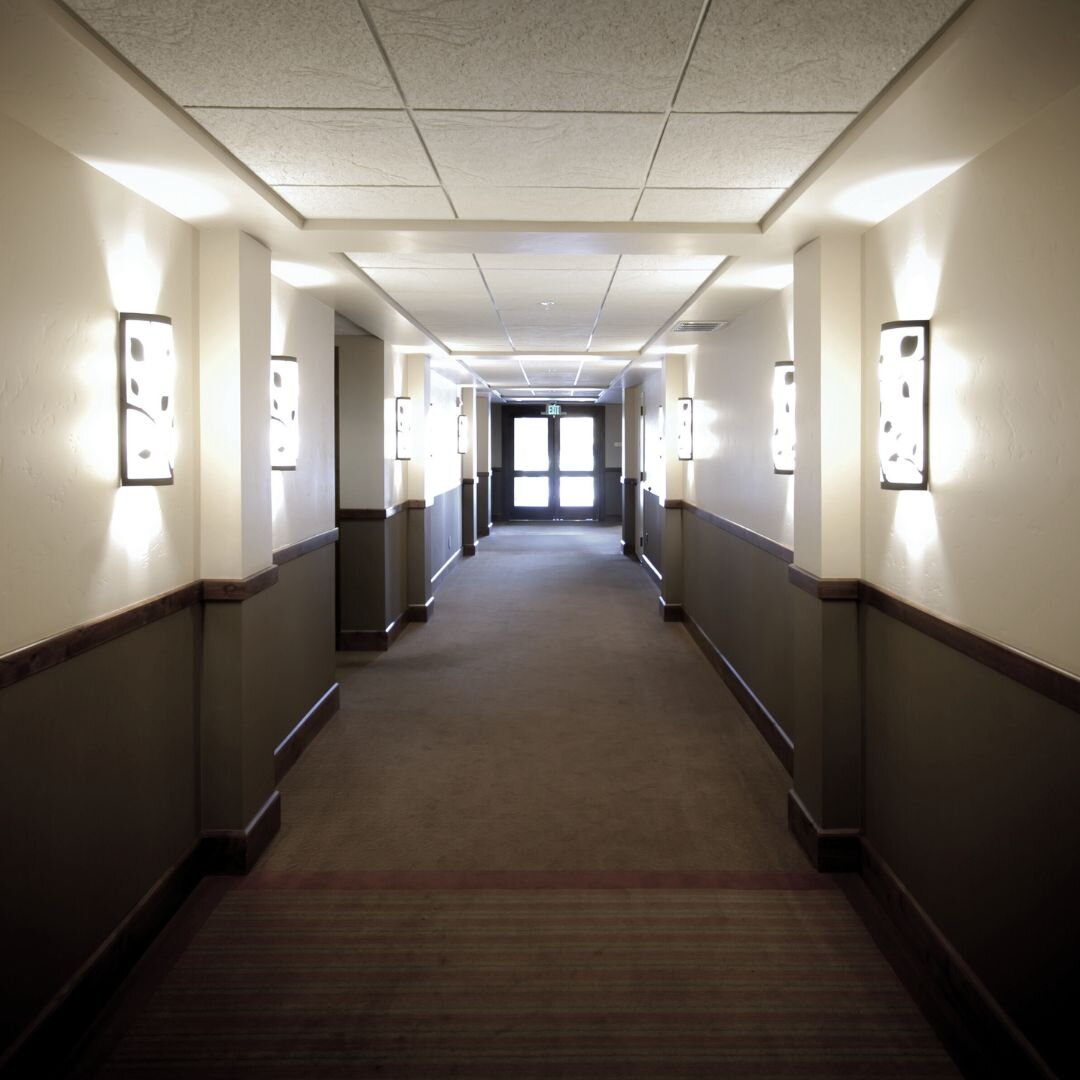Order by 23rd Dec 5pm for Pre-Xmas Delivery
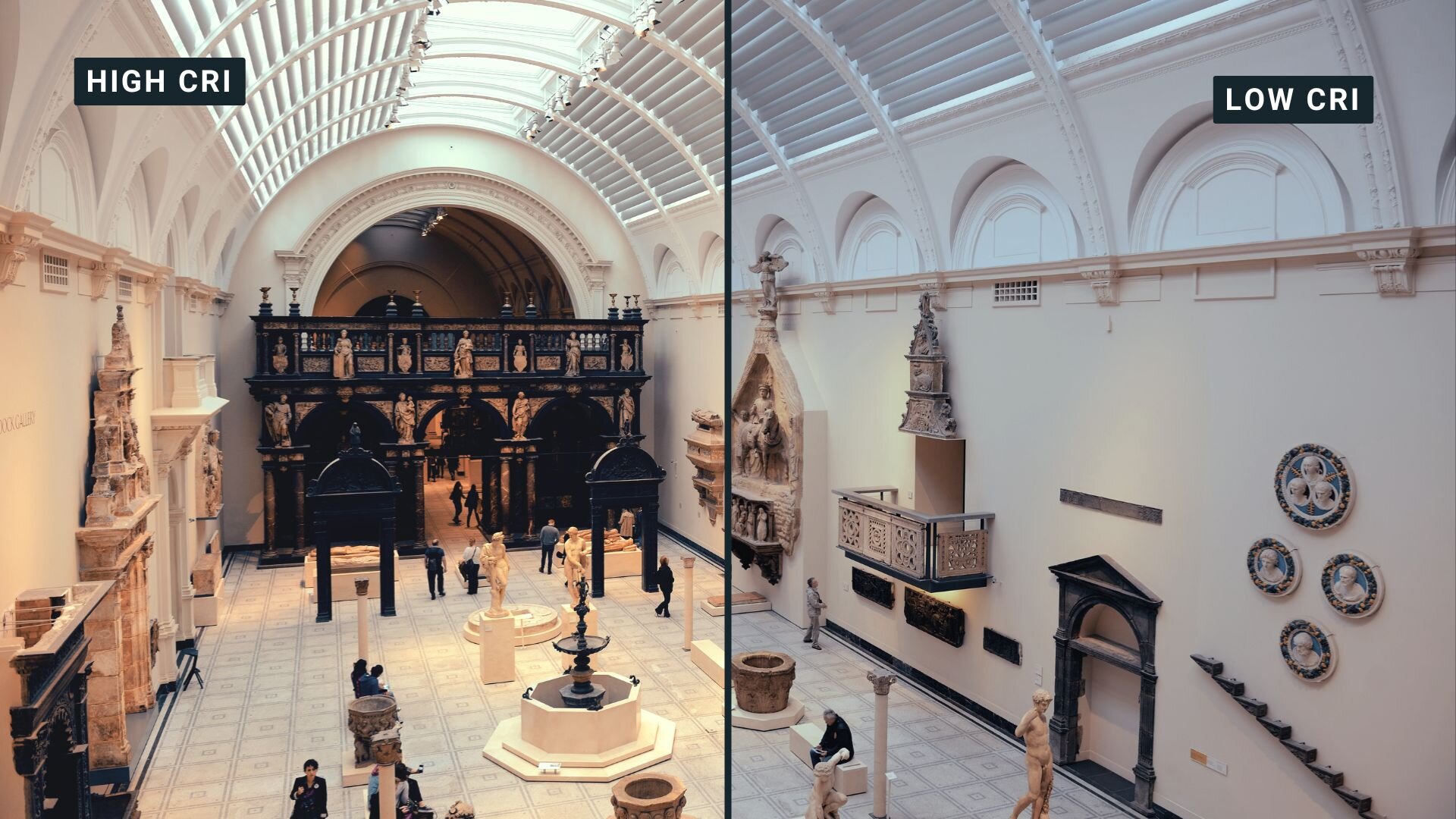
What Is CRI & Why Does It Matter?
When designing LED installations, CRI (Colour Rendering Index) is a critical factor for achieving professional-grade results.
High CRI lighting ensures white light is accurately reproduced, maintaining true-to-life colours as perceived by the human eye. In contrast, low CRI can make a project appear flat or washed out, diminishing functionality and visual appeal.
Whether you're installing lighting in galleries to highlight artwork, enhancing product visibility in retail displays, or ensuring clarity in kitchen spaces, selecting the correct CRI for your installation is pivotal.
In this guide, we’ll explore what CRI is, how it’s measured, and why it’s crucial for achieving exceptional results in professional lighting projects.
George Davies, the Director of Pecelec Studio Ltd, provided his expertise in lighting design and CRI considerations to help develop this guide. For more information on George's work, click here.

What Is CRI?
First introduced in the 1920s, CRI has long been a standard for measuring how accurately a light source reproduces the colours of objects compared to natural light.
Using a scale from 0 to 100, CRI evaluates the fidelity of colour rendering. The higher the CRI, the more natural and vibrant colours appear under that light source.
- High CRI (80–100): Colours look vivid and true to life.
- Low CRI (<80): Colours appear muted, distorted, or hard to differentiate.
High CRI lighting is particularly important in environments where accurate colour representation is critical, such as art galleries, retail displays, and kitchens.
By maintaining this historical standard, lighting professionals can ensure consistent and reliable assessments of colour quality in diverse applications.

How Is CRI Measured?
CRI (Colour Rendering Index) measures how well a light source reproduces colours compared to natural light, on a scale from 0 to 100. It assesses eight reference colours (R1–R8) at a specific Correlated Colour Temperature (CCT).
Higher scores indicate vibrant, natural colours, while lower scores result in muted or inaccurate rendering.
Key Metrics:
CRI: Measures colour fidelity based on eight reference colours.
- A CRI score close to 100 indicates excellent colour accuracy.
- Standard CRI excludes critical colours like deep reds (R9), important for food displays and healthcare applications.
TM-30: Offers a more comprehensive analysis by evaluating 99 reference colours.
- Fidelity Index (Rf): A detailed measure of colour accuracy.
- Gamut Index (Rg): Evaluates colour saturation.
TM-30 addresses limitations of CRI, providing more nuanced insights into colour quality, particularly useful in settings like retail, galleries, and medical environments.
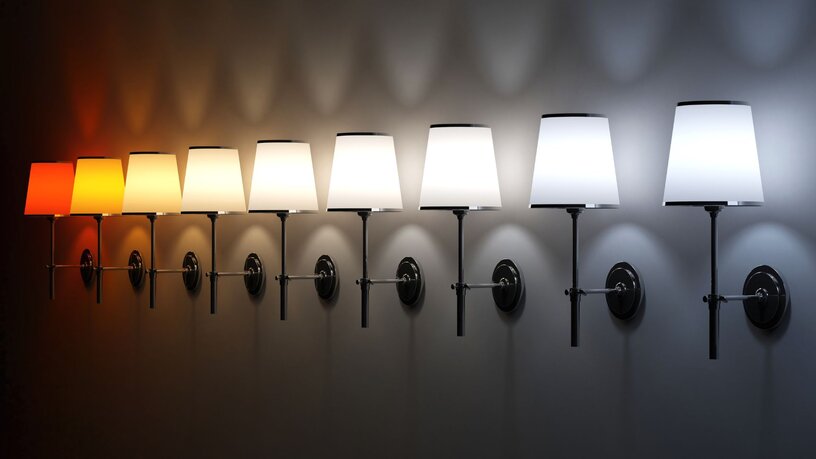
Why CRI Only Applies To White Light
CRI is designed for white light sources, as its purpose is to assess how well they mimic natural light. Coloured lighting, like RGB LEDs, focuses on creating vivid, saturated tones rather than replicating natural hues, making CRI irrelevant for these applications.
Using RGBW Tape For True White
Standard RGB lighting struggles to produce pure white light due to gaps in the spectral output, often caused by phosphor degradation. RGBW tape resolves this by incorporating a dedicated white diode, ensuring consistent and accurate white lighting for professional applications.
This makes it the ideal choice for environments requiring both vibrant colours and accurate white lighting.
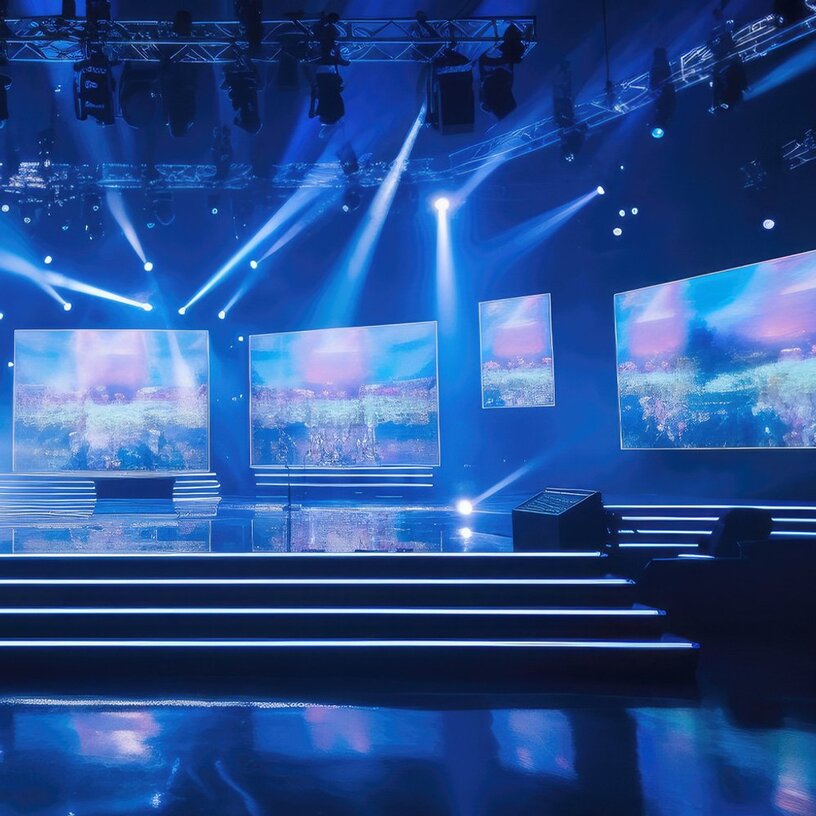
Colour Theory & Human Perception
Human vision relies on three types of colour receptors (red, green, and blue), and a balanced light spectrum ensures accurate colour perception.
- Colour Receptors: The human eye perceives colour through three types of receptors sensitive to red, blue, and green wavelengths. A light source with a balanced spectrum activates these receptors evenly, ensuring accurate colour perception.
- LEDs and the Spectrum: Unlike traditional light sources, LEDs can have gaps in their spectral output, leading to uneven colour rendering. High CRI LEDs are designed to fill these gaps for more accurate colour representation.
- Black Body Graph: Natural light sources like the sun follow a continuous spectral curve (black body radiation), which LEDs aim to replicate. CRI measures how closely an LED light source mimics this curve.

Black Body Radiation
CRI measurements are based on the principles of black body radiation, which refers to how a theoretical object emits light when heated.
Natural light sources, like the sun, follow a continuous spectral curve of black body radiation, providing a reference for accurate colour rendering.
LEDs aim to replicate this curve but often have gaps in their spectral output. High CRI LEDs are designed to fill these gaps, ensuring accurate and balanced colour representation.

The Role Of Colour Temperature (CCT)
CRI measures colour accuracy, but it’s the combination with Correlated Colour Temperature (CCT) that defines the mood and functionality of a space.
Matching the right CRI and CCT to your project can create tailored lighting solutions:
- Warm Tones (2700K–3000K): High CRI enhances cosy, inviting settings, perfect for hospitality spaces like restaurants and lounges.
- Neutral Tones (3500K–4500K): Balances warmth and clarity, ideal for offices or versatile spaces.
- Cool Tones (5000K–6000K): High CRI cool lighting provides clarity and precision, making it ideal for task-oriented spaces like kitchens, workshops, and laboratories.
Circadian Rhythm Lighting
Tunable white LEDs adjust between warm and cool tones to mimic natural light cycles.
This is particularly useful in settings like offices, schools, or museums, where lighting needs to support human productivity, comfort, or artistic display. By aligning lighting with circadian rhythms, these LEDs enhance functionality and adaptability.

Kelvin: Understanding Light Colour
The Kelvin scale describes the colour temperature of light, ranging from warm yellow tones to cool blue tones:
- Lower Kelvin (2700K): Produces warm, yellow-toned lighting suitable for residential and hospitality environments.
- Higher Kelvin (6000K): Produces cool, blue-toned lighting ideal for task-oriented spaces like kitchens or workshops.
Kelvin values are directly tied to black body radiation, which explains the transition from red to blue hues as an object is heated. High CRI lighting ensures accurate colour reproduction across all Kelvin ranges.
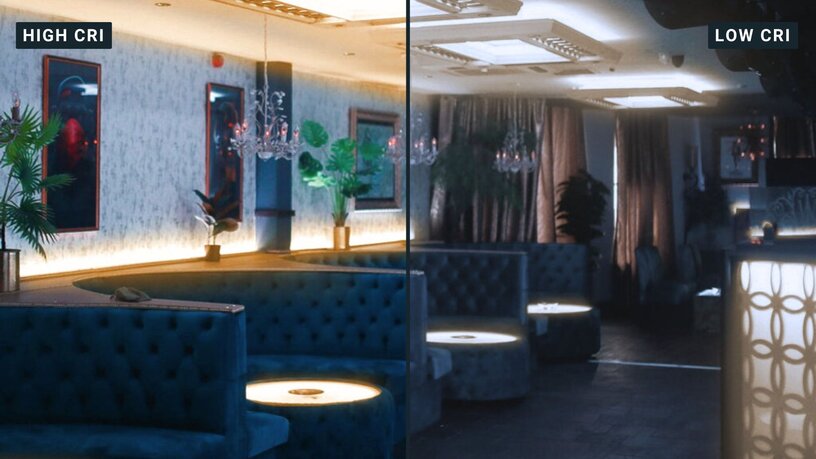
High CRI's Impact on Human Perception
High CRI lighting ensures precise colour reproduction, making it essential for applications where accuracy and clarity are critical.
In restaurants, it enhances the appearance of food, creating a visually appealing and inviting atmosphere.
In galleries, it faithfully renders artwork, preserving the artist’s vision for an authentic viewing experience.
In retail, it accurately displays product colours, improving visual appeal and driving customer engagement.
By ensuring true-to-life colours across various environments, high CRI lighting balances practical needs with visual impact, delivering professional-grade results.
Applications of High & Low CRI Lighting
When selecting lighting, understanding where high CRI lighting is essential and where low CRI can suffice helps achieve professional results.
Applications of High CRI Lighting
High CRI lighting is essential in environments where accurate colour representation and vibrant visuals are crucial:
- Art Galleries & Museums: Displays artwork in its true colours, ensuring accurate representation for viewers and preserving the artist's intent.
- Kitchens: Makes food look fresh and appetising, enhancing preparation areas and dining spaces.
- Retail Displays: Brings out the vibrancy of products, improving customer engagement and driving sales.
- Restaurants: Creates an inviting ambiance by rendering warm, accurate tones, particularly in dimly lit settings.
- Exhibition Stands & Branding: Accurately reproduces colours for logos, printed materials, and displays, ensuring consistency and professionalism.
Examples of High CRI
Applications of Low CRI Lighting
Typically, high CRI is preferred, but low CRI lighting offers a cost-effective solution for spaces where accurate colour rendering isn’t essential.
- Industrial Settings: Factories and warehouses prioritise brightness and safety over aesthetics.
- Backlit Signage: Suited for illuminated displays like advertising boards, where vibrant colour rendering is unnecessary.
- Outdoor Security Lighting: Focuses on brightness and durability to enhance safety, not visual accuracy.
- Hallways & Corridors: Cost-effective for areas where functional lighting outweighs aesthetic needs.
Examples of Low CRI
FAQs
What is a good CRI for general lighting?
A CRI of 80+ works for most spaces, but 90+ is ideal for applications requiring accurate colour rendering.
Does CRI affect brightness?
No, CRI measures colour rendering, not brightness or intensity.
Can LEDs have a negative CRI?
Yes, poor-quality LEDs with unbalanced spectrums can result in negative CRI scores.
Is CRI relevant for coloured lighting?
No, CRI is specific to white light sources designed to replicate natural light.
Why is CRI important in restaurants?
High CRI enhances the presentation of food and creates a warm, inviting ambiance.
Explore more in our Ideas and Advice section for expert blogs, tips, and guides to help you with your lighting projects.
Or, browse our full range of high-performance LED products to find the perfect solution for your next installation. Click here to shop now.
Get in touch with Ultra LEDs today
Ready to achieve exceptional colour accuracy in your next LED installation? Contact Ultra LEDs to find the ideal lighting solutions for your needs.
George Davies, the Director of Pecelec Studio Ltd, contributed to this blog with his expertise in electronics design and LED lighting. Pecelec Studio Ltd specialises in delivering high-performance LED solutions and advanced electronic systems for architectural, artistic, and experiential projects.







